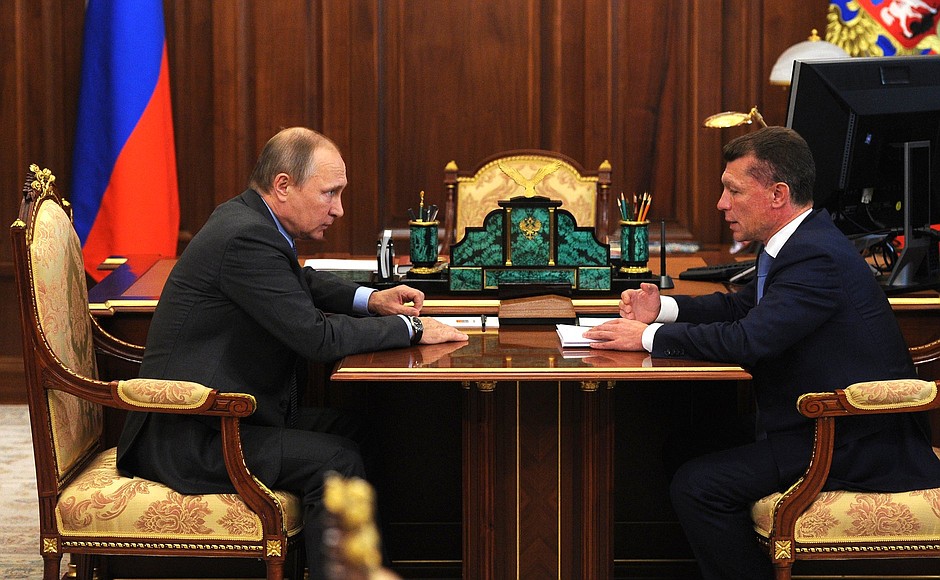
Maxim Topilin said that wages increased by 7.8 percent in Russia over the past seven months, but the increase was smaller in the public sector: 4.5 percent in education and 5.8 percent in healthcare. The Labour and Social Protection Ministry is working together with the Finance Ministry to allocate the necessary funds for implementing the President’s May 2012 Executive Orders in 2017–2018.
Regarding employment, a comparison of figures from 2015 and 2016 did not reveal any serious negative trends. Moreover, unemployment has decreased from 4.6 million in March to 4.1 million people in late July, which accounts for 5.3 percent.
Financial assistance is provided to 32 regions, where workers are retrained in new professions or for the new projects that are underway at local plants. These additional measures will embrace some 70,000 people.
As per the budget, 2.2 billion rubles of the approved 3 billion have already been transferred to the regions.
Replying to the President’s question about the investment of these funds in the regions, Mr Topilin told him about the creation of temporary jobs for people waiting for a new shop to open or the plant to be overhauled. Financial assistance is also stipulated for those who accept jobs at other companies.
Maxim Topilin also said about the demographic situation that under the respective Presidential Executive Order, the total fertility rate (TFR), or the average number of children that would be born to a woman over her lifetime, should reach 1.754 by 2018. However, the figure was 1.77 in 2015 and, according to Rosstat data, may exceed 1.83 for the first half of 2016. In a favourable situation, it can increase to 1.9 in a few years. The Minister said France is the only country in Europe with a comparable TFR.
The Minister also said that the number of women of reproductive age continues to decrease in Russia, due to a low birth rate in the 1990s. However, the government measures taken to encourage families to have two and more children, including maternity capital, are having a positive effect. Subsidies under the Third Child programme are allocated to 53 regions. On the other hand, the number of first births is declining because of the decrease in the number of women of reproductive age. Therefore, the regions are encouraged to implement regional programmes of support to young families.
The regions have a positive experience of supporting student families, including through mortgage allowances and baby rooms at universities, which should likely be formalised in legislation.
Work with the regions is underway on a weekly basis to encourage them to redirect part of regional budget allocations from programmes to raise the birth rate to helping young families with first children, considering that there are federal forms of assistance to families with second and third children, which must be maintained.
